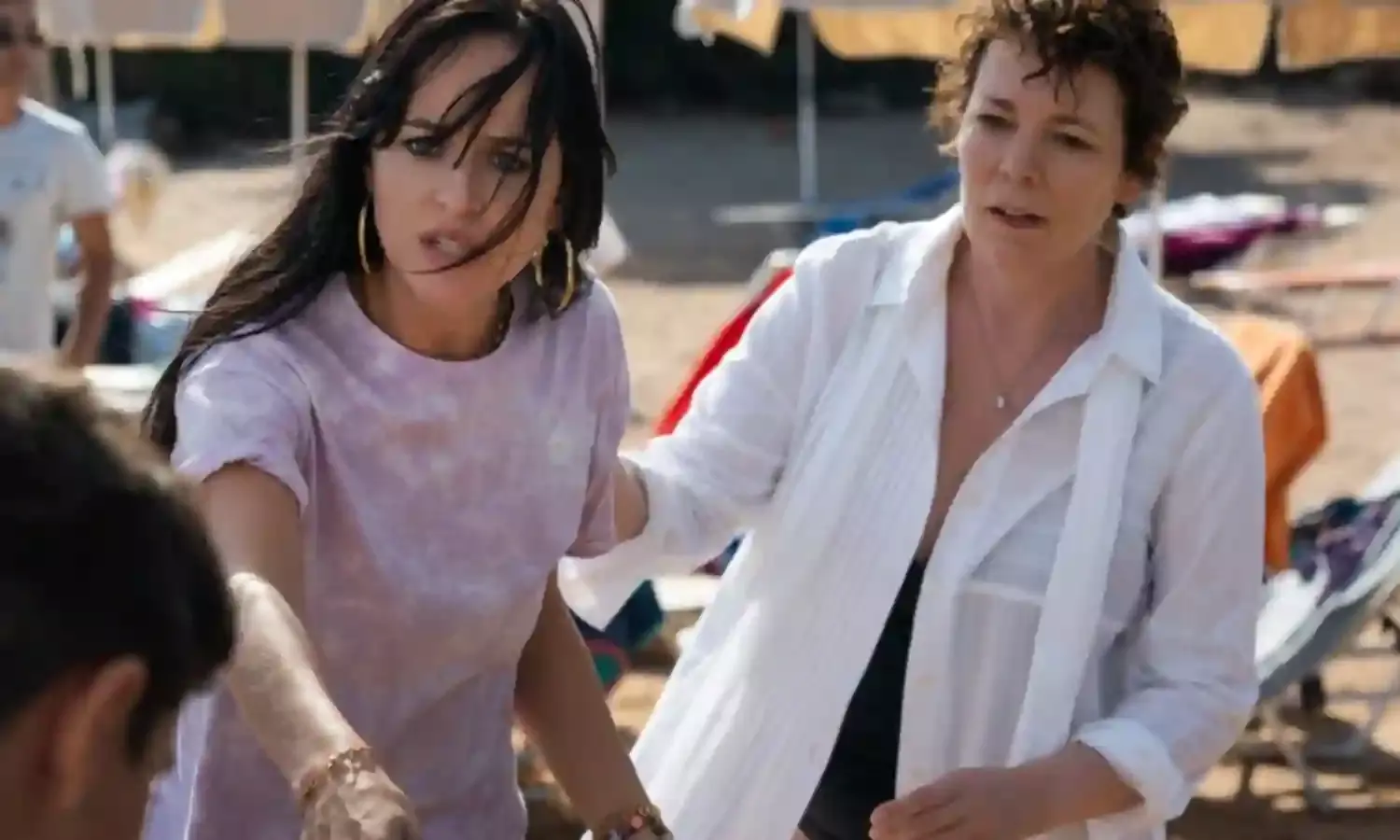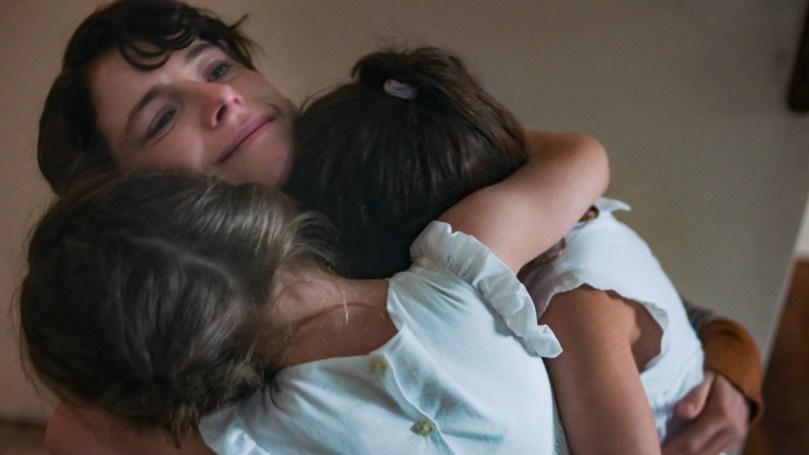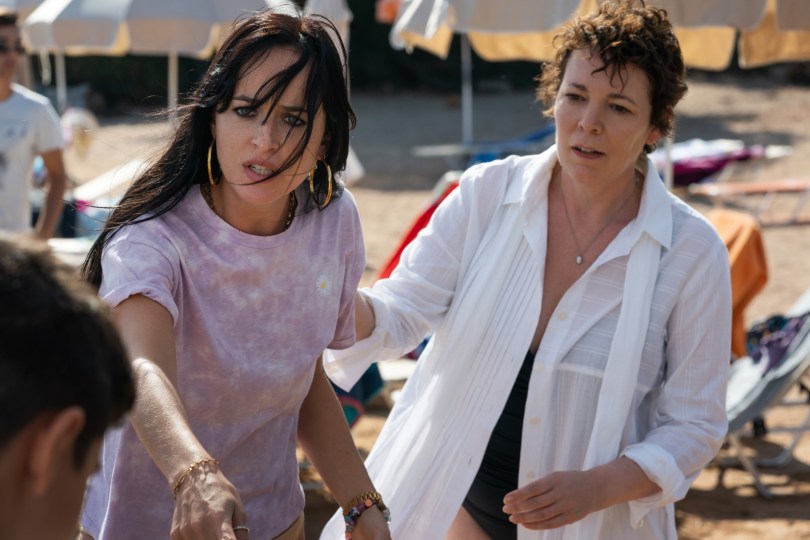The Lost Daughter - Raw and Real
Film Review

The Lost Daughter grows upon you slowly, steadily, creeping up behind you, taking you by surprise and shock when you realize what it is about this woman who is out to shock everyone by turning the ideal motherhood icon we have been fed down our throats for centuries right on its head.
It slowly slips into our conscience till we begin to identify with the protagonist Leda (Olivia Coleman), 48, a highly educated and honoured professor of Literature and Translation who arrives at a Greek seaside resort on a holiday, alone.
The Lost Daughter marks the directorial debut of noted actress Maggie Gyllenhaal. She picks Elena Ferrante's novel of the same name to frame her screenplay with and does a splendid job of it.
Gyllenhaal successfully challenges the idolisation of the mother figure through centuries not only through mythology across world cultures but also when it percolates down to real life, later expressed through cinema. In fact, women who have been labeled “bad mothers” throughout history are identified as “bad women”.
The Lost Daughter sticks out its tongue at all these representations by taking up cudgels for the ‘normal’ mother who refuses to be trapped within an invisible prison of motherhood whether she likes it or not and feels guilty for the slightest, even imaginary act of negligence of her kids. And she carries this guilt inside her throughout her life, forever feeling that she has lost her daughters in her incidental choice of living life on her own terms and then going back to them.
In Indian cinema, when one talks of mothers on celluloid, one generally visualizes the image of a sacrificing mother who is either bent over a sewing machine stitching clothes in umpteen films or, working at a construction site bent under the weight of bricks on her head, such as Nirupa Roy in Deewar (1975).
Over time, the mother image sometimes transformed itself to Dina Pathak in Hrishikesh Mukherjee’s Khubsoorat (1980) where she wields her invisible stick like a female Hitler. We also witnessed the pain and anguish of the mother portrayed by Rakhi in Ramesh Sippy’s Shakti where she is helplessly sandwiched between her loyalty towards her husband and her love for her son forcing to take sides as if she has no will of her own.
Mainstream film-makers have used different archetypes of mythical Goddesses to model most of their mother characters. It is traced to the Indian psyche that venerates the female in myth, in modes of worship as well as in fantasy. The principal hallmarks of the unified Goddess-figure or the Devi attains an idealized and exalted state in motherhood.

When subjected to abuse and humiliation, her triumph is sometimes established by a total holocaust and destruction brought about by her brave sons until peace and harmony are restored and everything ends on a note of happiness or hope.
Nargis' image in Mother India, according to film scholar Amaresh Mishra, celebrates the traditional motif of Indian womanhood. The symbol, the moral force of the nation is shown suffering in independent India, but emerges triumphant in the end as a new kind of ideal by shooting her own son. This sustains the social balance and dominance of traditional values in the midst of suffering and anarchy.
As the narrative grows, so does Radha. Trapped within the Mother Goddess image which the two personifications of Shakti that is Durga and Kali represent, Radha draws courage from within to kill her son for justice. She transcends the personal to reach the universal, bringing herself closer to the mythical goddesses who gave her shape. This frees her from the emotional and biological ties that bound her to her son. Other cultures, Western or South-Asian are not different in their image construction of mothers and motherhood.
Cleopatra had four children, according to Discovery. One was a son fathered by Julius Caesar. The other three, two boys and a girl, she had with Mark Antony. But we never hear about her children and her relationship with them. Like so many other ‘bad mothers’ of history Medea is depicted as having traditional ‘masculine’ personality traits like intelligence.
Emma Griffiths, a classicist at the University of Manchester, argues that Medea’s categorization as a witch and powerful intellectual force puts her at odds with ancient conventions about the role of women in general and the role of mothers in particular. We never hear or read much about Draupadi except that she had five husbands to attend to. We know little about her role as a mother.
Back to The Lost Daughter, Leda, on a self-chosen holiday, prefers to keep to herself but gets to befriend another local family which lives there. She notices how Nina, the beautiful young mother of a little girl whose father works away from the island and visits from time to time, getting extremely irritated and annoyed by her little daughter’s constant demands on her time, her space and her attention.
Leda moves back into her own past as she watches Nina (Dakota Johnson), a beautiful young mother getting extremely irritated with her little girl. Leda identifies with Nina as she too, would be specially irritated with Bianca, one of her two daughters Bianca and Martha, who demands her attention when she is working on her paper or preparing for an academic conference, or, seeking to enjoy occasional sex with her husband who works away and visits only from time to time. She identifies with Nina’s condition and the two share a silent telepathy about dissatisfaction with being a mother though they do not articulate their inner feelings.
The narrative moves beautifully and smoothly between and among Leda as the middle-aged, “independent” woman reflecting again and again on her past as the young Leda and trying to judge herself and then, Nina, who is having a clandestine affair with the handsome young man (Jack Farthing) on the island though she has a contented marriage with the long-distance husband, and Leda, as the young wife and mother((Jessie Buckley) brought together in a strange way when Nina’s daughter loses her favourite doll and cannot stop crying.
Where has her doll disappeared to? Is this little girl a microcosm of an “ideal” mother who is devastated when she loses her child and cannot find her?
These very disturbing questions get raised over this complex film filled with surprise twists at every turn, brought to real life, as if, by the award-worthy performance of Olivia Coleman as Leda, Dakota as Nina and Buckley as the young Leda.
Olivia’s eyes often moisten with unshed tears as she watches the local crowd on the beach from a distance, or, shares a drink with her friendly landlord (Ed Harris) who, despite the distance, is a keen observer of people, or, remembers her three-year relationship with a Professor (Peter Sarsgaard) who presents a completely different perspective on wooing intellectual women, or, her conversations with the young handyman (Jack Farthing) who, she sometimes feels pulled to and when Nina asks her whether she feels
Nina is doing something wrong, she says, “I have never ever judged others.” Much later, Leda discovers that the very handsome young man had an axe to grind. But she brushes it away.
Olivia takes us by surprise with every move of her facial muscles, her body language, her visit to the local store to search for tiny clothes, or her fear that her secret may soon be out. I have rarely seen such a restrained performance by an actor in one of the most complex characters in contemporary cinema. She is dignified, distant, and regal and yet, in her lonely moments, natural and humane. The two little girls who play Bianca and Martha are as if pulled out of their real lives and asked to play it out for the camera.
The cinematographer (Helena Louvart) is also a woman which makes this an unabashed woman’s film without quite ghettoizing the subject which could have been handled by any other director, man or woman, provided he/she treated the narrative and the drama within with kid gloves like Maggie Gyllenhaal did.
The film does not jar or jerk the rhythm in any way at any point in the film. Add to this the sound design, with the rolling of the waves of the sea, with the sea functioning not only as a backdrop but also a metaphor for the storm that keeps brewing in the disturbed mindsets of Leda and Nina, both, in different ways.
The camera, dominating the scenario with shades of blue, often cuts into the waves of the sea, Leda captured in mid-long shots on a boat looking at the crowd on the shore, Leda going on to search for the doll when it gets lost, Leda surprised by Nina’s admission of her affair with another man and then not so surprised after all. The music is low-key, melodious and lyrical and adds to the seamless way the narrative unfolds.
Are Leda and Nina therefore, very bad mothers who did not do what they ought to have done as mothers? Or, is it natural for any woman as a mother to be frustrated with the pressures the many-layered life she is forced to live on a day-to-day basis bears down on her?
Are fathers subjected to the same value judgment? Why are women crucified on the altar of a fictitious ‘goddess’ called ‘motherhood’? Do they really like to be iconized? Or is it forced on them? This brings us to that quintessential question of – is motherhood a choice for the woman? Or, is it forced on her by marriage, relationships, dual pressures in some way or another?
The Lost Daughter is a film about a lost mother whose life is filled with questions on where she went wrong or whether she went wrong at all. And perhaps, she finds some answers in that lost doll of Nina’s little daughter.
Keep it up, Maggie Gyllenhaal and team, go ahead and do an encore. Every mother ought to watch this film. Imperfection after all, is not a crime. It is raw and real.




